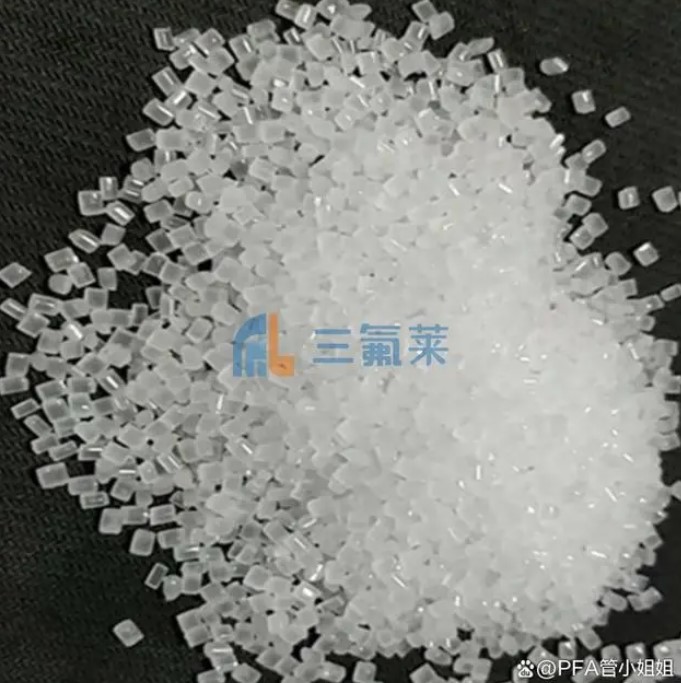What is PFA?
PFA, perfluoroalkoxy resin, is a high performance fluoroplastic, a modified copolymer of polytetrafluoroethylene. It has the chemical stability and low friction similar to PTFE, but the processing performance is better, and it is easy to form complex parts and thin-walled pipes. It is resistant to high temperature, chemical corrosion, excellent performance in harsh environments, especially suitable for high-purity transmission and processing flexibility requirements, despite the high cost, but in the need for high reliability applications.
What is Teflon?
Teflon is a registered trademark of DuPont and its representative product is polytetrafluoroethylene (PTFE), a widely used fluoroplastic material. Known for its excellent non-stick, heat and chemical resistance, it is widely used in the manufacture of a wide range of wear-resistant seals, bearings and valves operating in extreme conditions. Although Teflon has shown excellent performance in a variety of applications, it is limited by its difficulty in processing, especially when making large or structurally complex parts.

PFA or Teflon which performance is better?
PFA and Teflon (trade name polytetrafluoroethylene,PTFE) are high performance fluoropolymer materials that demonstrate excellent performance in a wide range of applications. To compare the advantages and disadvantages of the two, it is necessary to consider their basic properties, applicable environment and the refinement requirements of specific application scenarios.
First, Teflon is known for its unique high temperature tolerance, excellent low temperature stability and near-absolute chemical inertia, showing extremely low reactivity to almost all chemicals, combined with an ultra-low coefficient of friction and excellent non-adhesion and electrical insulation properties. In view of these properties, Teflon is widely used in cookware surface coating, chemical equipment inner wall protection, wire and cable insulation materials.
On the other hand, PFA, as a modified perfluoroalkoxy resin derivative of PTFE, not only retains the main advantages of PTFE, such as high temperature stability, corrosion resistance and non-adhesion, but also compensates for the limitations of PTFE in this respect due to its superior plasticity and processing fluidity. This means that PFA is not only suitable for manufacturing products in a variety of extreme environments, but also for forming complex forms through injection molding, extrusion and other processes, such as pipes, valve parts and medical equipment components.
From an overall performance point of view, Teflon (PTFE) and PFA show excellent and comparable levels of performance in terms of high temperature resistance, corrosion resistance and non-viscosity. However, when it comes to thermoplastic molding process requirements, or applications with higher expectations for mechanical strength and toughness of products, PFA may exhibit superior performance compared to Teflon due to its greater plasticity and ductility.
In summary, the key to judging the performance of the two materials lies in the specific application environment and demand conditions. For applications where high machining performance requirements are required, PFA may be a more advantageous choice. On the contrary, in an environment where chemical corrosion resistance and high temperature stability are extremely emphasized, and where the processing form is relatively simple, the advantages of Teflon are more significant.
Sanfulai, high-end fluorine plastic products manufacturer. Supplier of high purity PFA tubes for semiconductor factories.
This article is originally written by Sanfulai. For more information please subscribe to our channel!